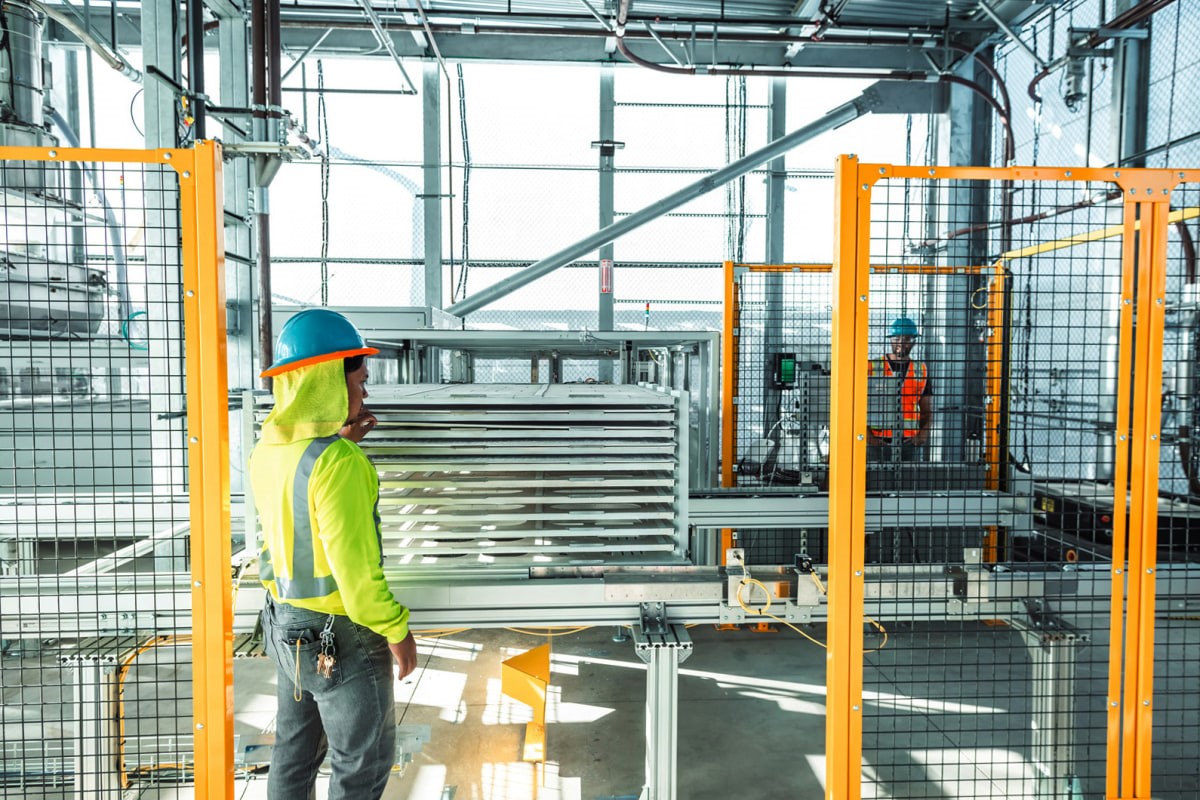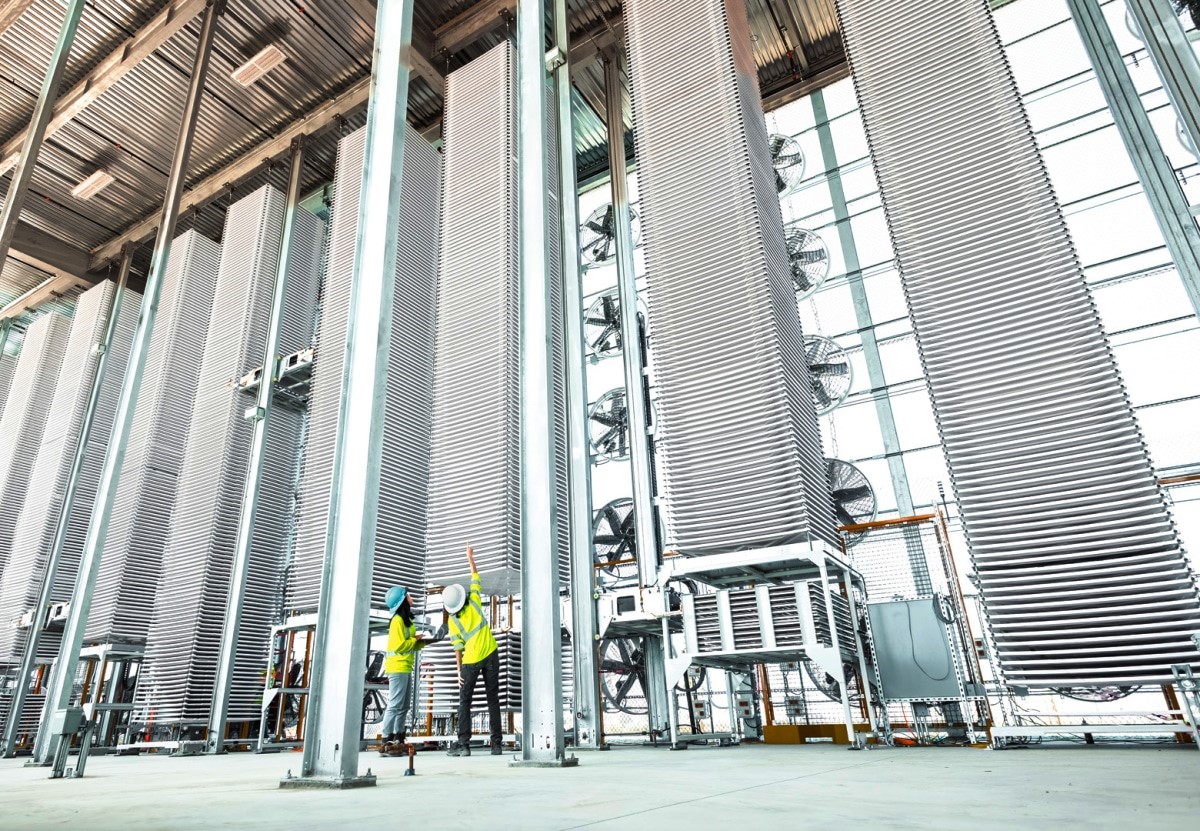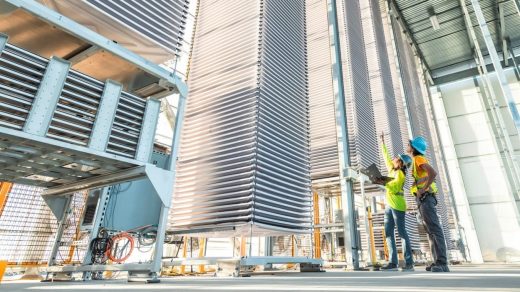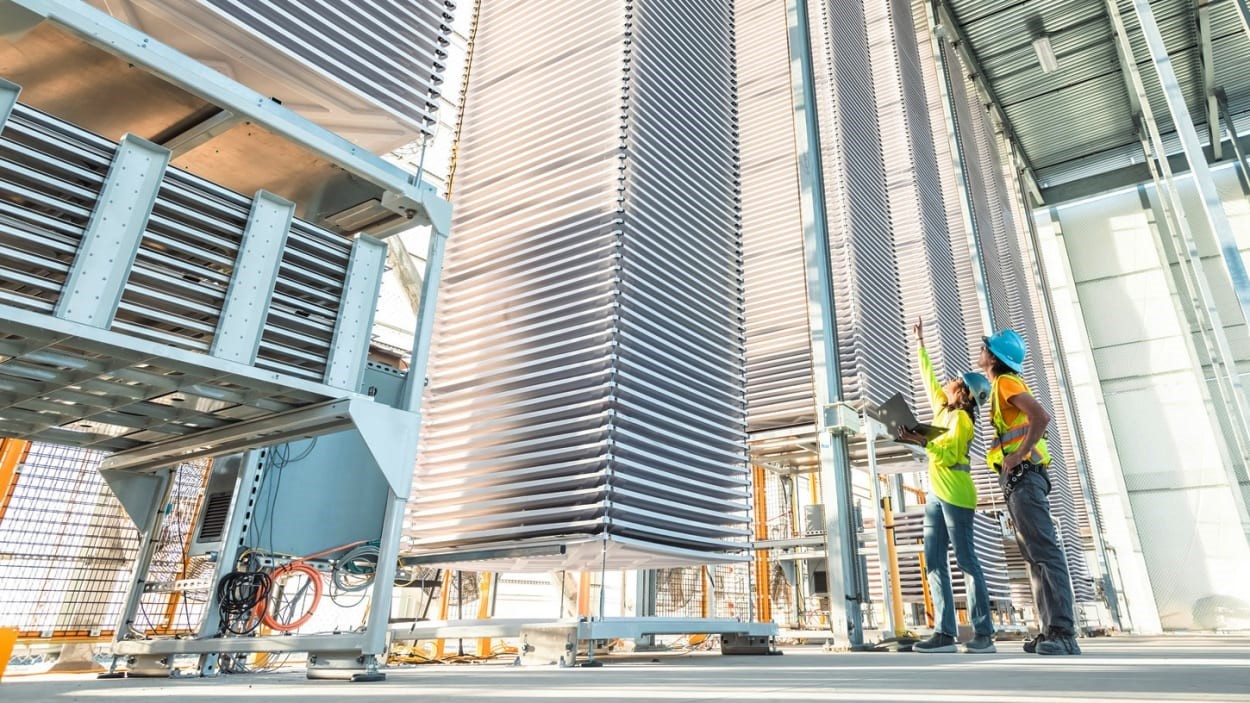In California’s Central Valley, a massive carbon removal factory is pulling CO2 from the air
Across the street from a farm in California’s Central Valley, a gleaming new three-story structure is now quietly pulling CO2 from the air.
Run by a Bay Area-based startup called Heirloom, it’s the first commercial “direct air capture” facility in the U.S. Each year, it will capture as much as 1,000 tons of CO2 from the atmosphere, one early step in the company’s plans to scale up to millions of tons a year. To permanently store the CO2, it will be injected into fresh concrete at concrete plants—a step that also shrinks the carbon footprint of concrete. The startup is selling carbon removal as a service to companies including Microsoft and Stripe.
As the world works to cut emissions, carbon removal is also necessary to have any chance of meeting climate goals. “The climate science is clear—it’s really a math problem at the end of the day,” says Heirloom CEO Shashank Samala. The world has already put so much CO2 in the atmosphere that in order to hit net zero, “we need to also remove CO2 from the atmosphere on the order of billions of tons,” he says.

Heirloom’s system speeds up something that happens naturally: limestone absorbing CO2 as it forms. The company starts by heating up existing limestone in a kiln running on renewable energy. That process extracts CO2 and leaves behind a mineral powder. Then the powder is put in trays outside, where it acts like a sponge, sucking up CO2 and reforming it into limestone. An automated system, designed by engineers who came from such companies as Tesla, monitors and moves the huge stacks of trays. When it’s ready, the limestone goes back in the kiln, where the CO2 is extracted and can be permanently stored. The design can be scaled up by adding more stacks of trays.
Two years ago, the concept was still being tested in a petri dish in a lab. The tech has been able to grow quickly, in part, because it’s relatively straightforward; unlike some other new technology, it doesn’t require building a complex new supply chain. The world already mines billions of tons of limestone every year to make cement. To capture a billion tons of CO2, Samala says, the company would need less than 0.1% of annual limestone production.
Limestone is also cheap, which can help lower the cost of the whole process. “For me, all that matters is cost and scalability,” Samala says. Some other direct air capture technology uses fans to pull air through large filters, but the machines are expensive to build, and use more energy to operate. Right now, other technology is estimated to cost between $600 and $1,000 per ton of captured CO2. Heirloom doesn’t disclose its current costs, but is aiming to get to $100 per ton next decade. Others are aiming for a similar cost, but Heirloom may have an easier path for getting there because of the overall design.
Multiple other direct air capture projects are also underway. One project under construction in Iceland plans to be able to capture multiple megatons of CO2 by the end of the decade. Another project in Texas expects to capture 500,000 tons of CO2 a year, with the potential to scale up to 1 million tons a year. A project planned in Wyoming hopes to capture 5 million tons of CO2 a year by 2030, though it has faced delays. Each of the projects plans to store captured CO2 underground.
At the California plant, Heirloom is partnering with CarbonCure, a company that develops technology to make concrete more sustainable, to add captured CO2 to concrete. (Earlier this year, the companies demonstrated that it worked.) In other cases, Heirloom will store CO2 underground, but that’s a longer process that requires permits and more infrastructure. CO2 can be injected in concrete now, and because of the huge scale of concrete production, it can easily grow. It’s also a lasting solution.
“Even if the building or the pavement is demolished, the CO2 that we stored in the concrete stays there,” says Samala. “It’s durable and permanent.” Adding the CO2 makes the concrete stronger, so it’s a better building material. And it also means that concrete can be made with less cement, which helps reduce emissions in concrete manufacturing.
Heirloom was one of a handful of companies that the federal government recently selected to build new direct air capture hubs. The startup is working with Climeworks, another direct air capture company, to build a large new hub in Louisiana that aims to capture and store 1 million tons of CO2 a year using both company’s technologies. But Heirloom’s ultimate goal is much more ambitious: to remove 1 billion tons of CO2 by 2035.

“At the end of the day, this solution really doesn’t matter unless it’s at massive scale, right?” Samala says. Direct air capture needs to scale up as much as wind and solar have, he argues, but in a fraction of the time. To get there, carbon markets will have to continue to grow. There’s already demand for permanent carbon removal from companies like Microsoft, which recently committed to buy as much as 315,000 tons of carbon removal from Heirloom.
The startup, which raised $53 million in a Series A round of funding last year, will also have to raise more capital to build infrastructure. “For every dollar of venture capital, we need to raise $1,000 in project finance capital,” he says. “That’s what you’ve really seen with solar and wind—those things don’t get funded by venture capital. They get funded by project finance, where you have a bankable contract from a customer that you take to a bank and an equity investor, and they give you a bunch of money and you go and build that project.”
Federal support is helping the company grow, including both the funding for the new hub in Louisiana and the 45Q tax credit that companies can claim when they sequester carbon. “Carbon removal is a public good,” Giana Amador, executive director of the Carbon Removal Alliance, said in a statement. “We believe that, like any other public good, the very best customer for U.S. carbon removal projects like Heirloom’s is the government.”
Samala believes that the company can grow as quickly as it needs to to hit its 2035 goal. “Look at what happened in the last two years: We went from capturing a kilogram on a petri dish to building a facility that has a capture throughput of a million kilograms,” he says. “We’re doing everything we can to get there.”
(9)



